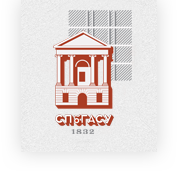Sociolinguistic Insights into the English Naming Practices in Urban Transit: A Case Study of Wuxi Metro
DOI:
https://doi.org/10.63313/LLCS.9053Keywords:
Sociolinguistics, English Naming Practices, Translation, Urban Transit, Wuxi MetroAbstract
As globalization progresses, China’s public transportation system has received an increasing number of foreign passengers. In this context, the English naming practices of metro stations play a cumulatively pivotal role in reflecting a city’s characteristics. This study examines the linguistic strategies adopted by Wuxi Metro in translating Chinese station names to English, explores how these practices mirror the city’s historical and cultural identity, and reviews public perceptions of these names. The research content dominantly comes from the bilingual map shown on Wuxi Metro’s official website and the posts on some common social media platforms. It reveals that Wuxi Metro’s English names generally adhere to global standards while preserving cultural elements, such as naming metro stations after historical landmarks. Overall, Wuxi Metro uses both translation and transliteration for English station names. Meanwhile, it balances demonstrating a city’s cultural identity with keeping the clarity of names. Public feedback on altering the translations regarding nouns of locality is also taken into consideration by Wuxi Metro.
References
[1] Adami, E. (2020). Constructing lines, constructing place-names: The case of the Delhi metro. In Shifting toponymies:(Re) naming places,(re) shaping identities. Cambridge Scholars Publishing, 9-24.
[2] Bowes, J., Diamond, S., Juneja, M., Gordon, M., Skelton, C., Gunatilleke, M., ... & Zheng, M. D. (2018). User-centered taxonomy for urban transportation applications. In HCI in Business, Government, and Organizations: 5th International Conference, HCIBGO 2018, Held as Part of HCI International 2018, Las Vegas, NV, USA, July 15-20, 2018, Proceedings 5. Springer International Publishing, 577-593.
[3] Bright, W. (2000). The sociolinguistics of the “s–word”: Squaw in American placenames. Names, 48(3-4), 207-216.
[4] Buberwa, A. (2012). Sociolinguistic meaning of Bantu place names: The case of Ruhaya in north-western Tanzania. Journal for Studies in Humanities & Social Sciences, 1(2).
[5] Dong, X. S. (2015). A sociolinguistic study of Chinese place name characters—Taking the character “Ha” in Harbin’s place names as an example. Journal of Northeast Agricultural University (Social Science Edition), 13(01), 65-70.
[6] Fraszczyk, A., Weerawat, W., & Kirawanich, P. (2020). Metro station naming strategies in selected megacities and lessons for new metro systems. Transportation Research Procedia, 48, 2608-2620.
[7] Gu, L. A. (2005). Place names as a record of society, history, and language. Journal of Hotan Teachers College, (02), 201.
[8] Guo, D. P. (2011). Social linguistic analysis of place names of Shanxi. Legendary Biog-raphies (Theoretical Research Edition), (03), 80-81+69.
[9] Jenkins, E. R. (1991). Linguistic and sociolinguistic issues in South African place names. English Usage in Southern Africa, 22(1), 23-33.
[10] Lim, S. T. G., & Perono Cacciafoco, F. (2023). Naming public transport and historicising ex-periences: Critical toponymies and everyday multilingualism in Singapore’s mass rapid transit system. Urban Studies, 60(15), 3045-3060.
[11] Liu, B., & Zhu, H. (2014). Naming and renaming: A critical study on Guangzhou metro sta-tions. Scientia Geographica Sinica, 34(09), 1139-1144.
[12] Liu, M. (2011). A sociolinguistic approach to the pronunciation of place names: A case study of the“Li” of “Lishui”. Applied Linguistics, (03), 73-78.
[13] Qu, Y. N. (2016). Social linguistics analysis of the names of Nanjing metro stations. Journal of Shijiazhuang Tiedao University (Social Science Edition), 10(04), 56-61.
[14] Shakarboyevich, N. B. (2024). The Sociolinguistic Features Of Socio-Economic Toponyms In Kushrabat District. In International Conference on Linguistics, Literature And Transla-tion, 1, 63-66.
[15] Shi, L. (2014). An exploration of the translation of Beijing subway. Examination and Evalu-ation (College English Teaching Edition), (06), 35-38.
[16] Tao, L. C., Zhou, T. Z., & Cao, S. R. (2024). A corpus-based study on English translation of metro station names: A case study of metro line 1 in Shanghai, Nanjing, Suzhou, Wuxi, Changzhou and Xuzhou. Chinese Science & Technology Translators Journal, 37(01), 28-31.
[17] Xiong, L. L., & Wu, Y. (2015). A brief analysis of the English translation of Nanjing Metro station names. Journal of Lanzhou Institute of Education, 31(01), 125-126.
[18] Yang, S. Y., & Guo, M. (2015). Naming methods and cultural significance of Wuhan Metro station names. Modern Chinese (Language Research Edition), (10), 104-106.
[19] Yang, X. (2023). Cultural features of place names in Yuechi, Sichuan: A sociolinguistic per-spective. Journal of Sichuan Cadre Correspondence College, (01), 75-79.
[20] Yang, Y. M. (2019). A sociolinguistic analysis of Tianjin Metro station names. Journal of Lanzhou Institute of Education, 35(01), 69-71.
[21] Yin, J. (2020). A sociolinguistic analysis of metro station names in Xi’an. Overseas English, (10), 93-94+114.
[22] You, R. J., & Zou, J. Y. (2016). Textbook of Sociolinguistics (3rd ed.). Fudan University Press.
[23] Zhu, W. J. (1985). An introductory survey of sociolinguistics. Foreign Language Teaching and Research, (03), 1-8.
Downloads
Published
Issue
Section
License
Copyright (c) 2025 by author(s) and Erytis Publishing Limited.

This work is licensed under a Creative Commons Attribution-ShareAlike 4.0 International License.















